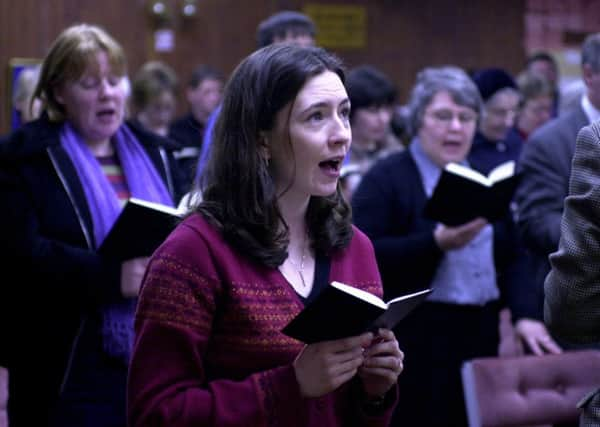Jane Anderson: Men-only no way to attract new blood to Kirk


It came after research from Christian Vision for Men – a charity which introduces men to Christianity – showed that only 33 per cent of men feel comfortable in church, yet half are comfortable in a women’s underwear shop.
Research also suggests that two million fewer British men than women claim to be Christian. At the current rate of loss, men could be completely absent from UK churches by 2030.
Advertisement
Hide AdAdvertisement
Hide AdIt certainly seems as if women are pushing forward. An increasing number are now priests. In a local example, numbers among members leading prayer in church are 3:1 for women, those willing to do reflections are 2:1 and volunteering for pastoral care was 5:0 in favour of women.
Why this imbalance? Possibly the role of lay people was more limited in the past and the nature of jobs more official; treasurer, secretary, maintenance – roles of power and authority where men were used to taking control.
Woman now do all these activities in their day jobs, so they move easily into these positions. Men don’t seem to move into new areas of lay involvement as readily.
It could be said that men and women have different comfort zones and that spiritual activities and caring fit some women’s skill-sets. The case then for specific men’s activities may seem unanswerable.
But, this would cut off men’s involvement in the spiritual and emotional areas of religion – are these not the important core of what church life should be about? If some men are reticent to reveal themselves and their vulnerabilities, should time and space not be given to develop these aspects previously kept under wraps? In an inclusive church, men shouldn’t be confined to their traditional ghetto, just as women are escaping theirs.
The church needs to move beyond traditional stereotypes to attract newcomers of both sexes. Why should a priest not spend time at the pub or at a rugby match? Besides, it’s not only men who find it easier to start a conversation under such circumstances.
Rather than trying to create ‘church’ activities for specific groups, clergy and members need to engage with people in their normal lives; going to the bingo, the SWI, or a music festival is more likely to bring about interest in religion.
There are complexities. The recent case in England where a bishop opposed to the ordination of women turned down an appointment because of protests against his views, is worrying.
Advertisement
Hide AdAdvertisement
Hide AdThis is not only because it was agreed when the appointment of women bishops was accepted that those who in conscience did not accept women priests would still have a role. Women who have been at the forefront of progress to an inclusive church must surely accept that tolerance of difference must work both ways.
Men-only activities are not what’s needed to bring people to a loving and inclusive church.
Jane Anderson lives in Strathbraan, Perthshire. She is a member of St Mary’s Episcopal Scottish Church, Birnam, and former archivist to Atholl Estates.